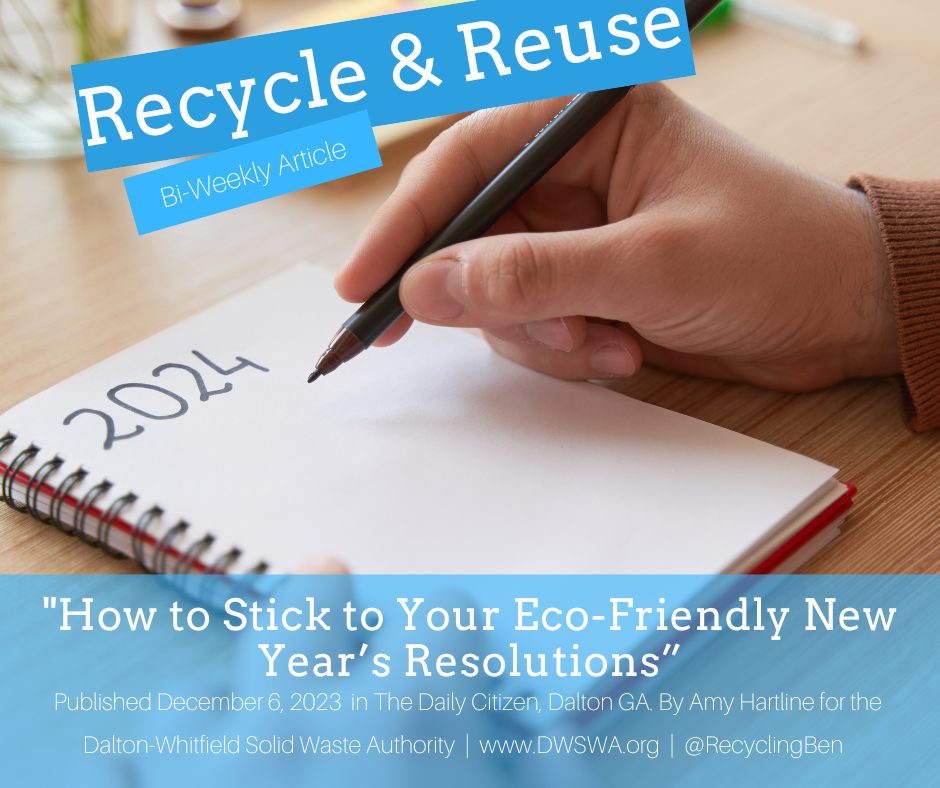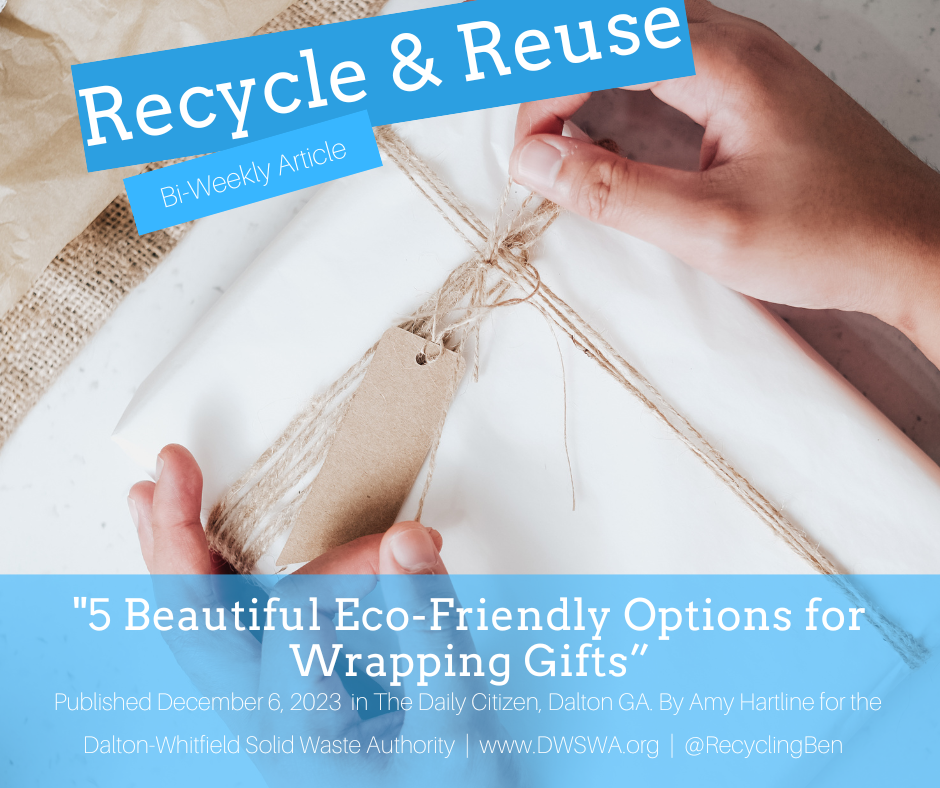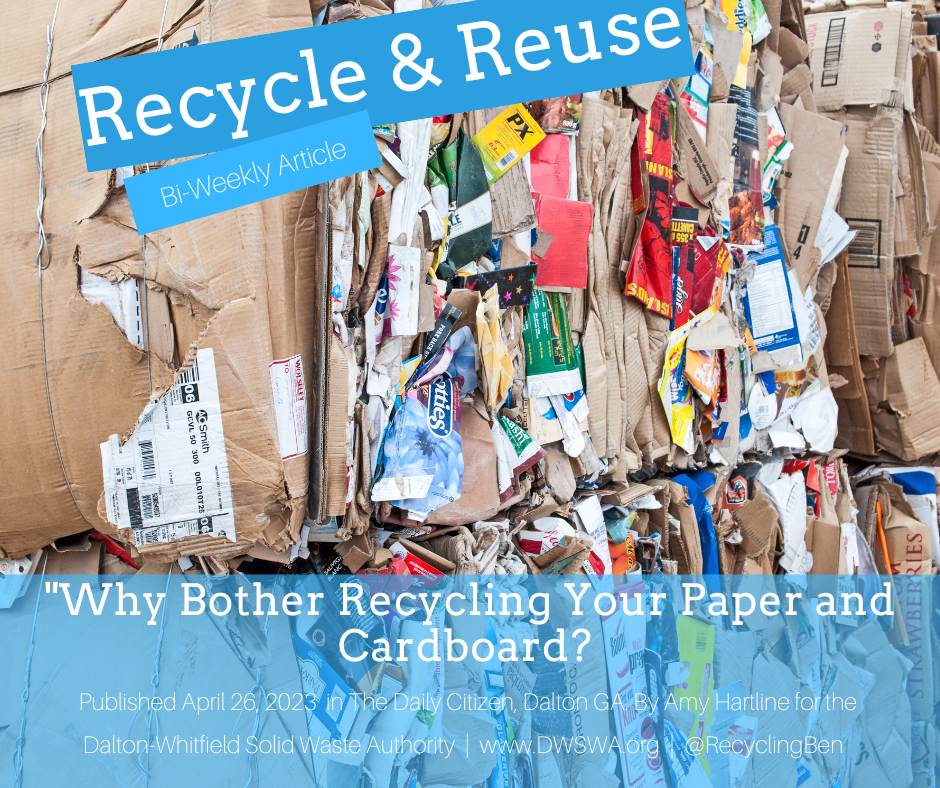Why Bother Recycling Your Paper and Cardboard?
/With more and more online shopping, we have more cardboard and packaging materials to deal with in our everyday life than potentially ever before. We also use paper all day long from the newspaper you are reading to your daily calendar. But do you know what goes into making your cardboard and paper that you use every day?
About each one of these bales of sorted cardboard will save about twelve trees. To get here your recycling has to be collected, sorted by hand, and put through a baler. Now, it is ready to be taken to a paper mill in Dalton where they will be recycled.
The production of paper and cardboard can come at a significant environmental cost, including deforestation and energy consumption. Recycling paper and cardboard helps us reduce this environmental impact and conserve valuable natural resources.
The reason we often begin recycling paper at first is to reduce deforestation. Coming from a more agricultural part of the state, it is likely you have seen logging happening on a lot near you before in your life so this reason can feel close to home. According to the World Wildlife Fund (WWF), nearly 4 billion trees are cut down each year for the production of paper and other forest products. Recycling lets us use old paper to make new paper instead of wood fibers from cut down trees.
Deforestation has significant negative impacts on the environment, including the loss of wildlife habitat, disruption of water cycles, and increased greenhouse gas emissions. By recycling paper and cardboard, we can reduce the demand for fresh raw materials, thereby reducing the need to cut down more trees and helping to protect our forests. For every 2,000 pounds of paper we recycle, we save approximately seventeen trees. If you recycled every piece of paper you used in a year, you would save about five trees that year.
Recycling paper and cardboard also saves resources beyond trees that you may not normally think of. The process of producing paper and cardboard from raw materials requires significant amounts of water, energy, and chemicals. While recycling naysayers will argue that recycling requires more energy due to cleaning this has been proven, multiple times, to be untrue. It takes significantly more energy and water required to make paper from raw resources than to clean recycled ones. The U.S. Environmental Protection Agency (EPA) notes that recycling one ton of paper can save over 7,000 gallons of water, 3.3 cubic yards of landfill space, and prevent the emission of greenhouse gasses equivalent to that of driving a car for 3,700 miles compared to creating one ton of paper from harvested trees.
Recycling paper and cardboard also has economic benefits right here in Dalton,GA. Recycling creates jobs in the collection, sorting, processing, and manufacturing of recycled paper and cardboard products. The paper collected at the Dalton and Whitfield recycling center with the Dalton-Whitfield Solid Waste Authority is taken to mills in our county that process the recycling and turn it into things like book covers, cereal boxes, and even toilet paper.
Recycling paper and cardboard also reduces the costs associated with waste disposal. Landfill space is limited and can be costly. Recycling these materials not only reduces the burden on landfills but also saves costs associated with waste disposal. Additionally, the demand for recycled paper and cardboard products creates a market for these materials, providing an economic incentive for recycling and supporting a circular economy.
Whether you decide to recycle your paper and cardboard to save our trees, our water, or our economy, it is clear it is the right choice to make. To learn more about recycling in Dalton and Whitfield including what locations you can take your paper and cardboard for recycling visit https://www.dwswa.org/recycling-101.
































